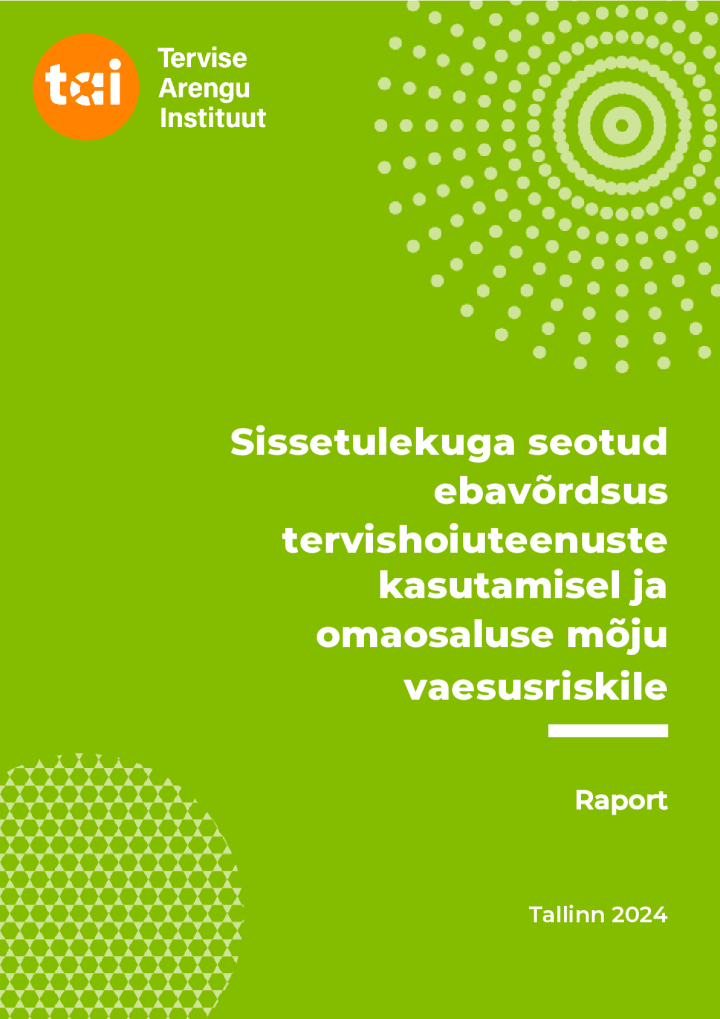Health inequalities studies
Research can identify vulnerable target groups and assess the life-course determinants of health inequalities. Average life expectancy in Estonia has increased significantly over the last decades, but systematic differences in health and health-related determinants between population groups and regions persist.
Data from our medical registers and other databases are used for the studies.
Key studies
- Life-course socio-economic and psychosocial risk factors, health behaviour in adulthood, health status and all-cause mortality: cohort study (2017–2023).
The aim of the study is to identify the associations between early life-related socioeconomic and psychosocial risk factors and health behaviour, later health status and all-cause and post-cause mortality in Estonia, and to investigate the mechanisms underlying these associations. The data of the people participating in the study have been collected during the 1996/1997 and 2006/2007 health surveys conducted by the National Institute of Health and Welfare (TAI) and are continuously linked to the Population Register and the Causes of Death Register.
- Social risk factors for morbidity, mortality and survival: a census-based cohort study (2021–2030).
The objectives of the study are: 1) to analyse the associations of social risk factors with morbidity and survival in selected cancer sites and changes in the associations; 2) to assess the associations of social risk factors with mortality by cause of death and changes in the associations; 3) to analyse inequalities in mortality and changes in inequalities in mortality compared to other countries. 2021–2035.
- Morbidity and mortality among emergency workers: a cohort study (2016–2030).
The aim of the study is to investigate the risks of work-related ill health among Estonian rescue workers, with a focus on the risks of cancer and death, and possibly other diseases. The cohort will be followed up on a long-term basis through medical health registers.
- Health care needs and utilisation
The aim is to assess demographic and socio-economic differences in the need for and use of health care services in Estonia and comparatively in the European Union, based on the European Health Interview Survey.
- Morbidity and mortality among Chernobyl veterans (since 1986)
Since 1986, the cancer incidence and mortality of Chernobyl veterans from Estonia (4831 men) have been routinely and retrospectively monitored through the Cancer Registry and the Cause of Death Registry.
International cooperation projects
- EuroMOMO: Weekly mortality surveillance in Europe, aiming to detect and measure excess mortality that may be related to seasonal diseases (e.g. influenza), pandemics (e.g. COVID-19) and other public health threats. Each week, mortality data from the previous week are published on the EUROMOMO website for different European countries.
- GBD (Global Burden of Disease). Global Burden of Disease Survey, aiming at estimating, at a global level and in a correlated manner, the loss of health due to diseases, injuries and risk factors, by age, sex and region and over time. Latest results of the project on GBD.
- LIFEPATH. Life course biological pathways influencing social differences in healthy ageing (2012–2023). The aim of the study is to identify the social and biological factors that influence ageing trajectories among socially diverse people. Project website
- CHAIN. International collaborative project to reduce mortality inequalities (2021–2030). The aim of the study is to work with Europe and other countries to monitor, identify causal links and reduce mortality inequalities within and between countries through successful interventions. Project website
